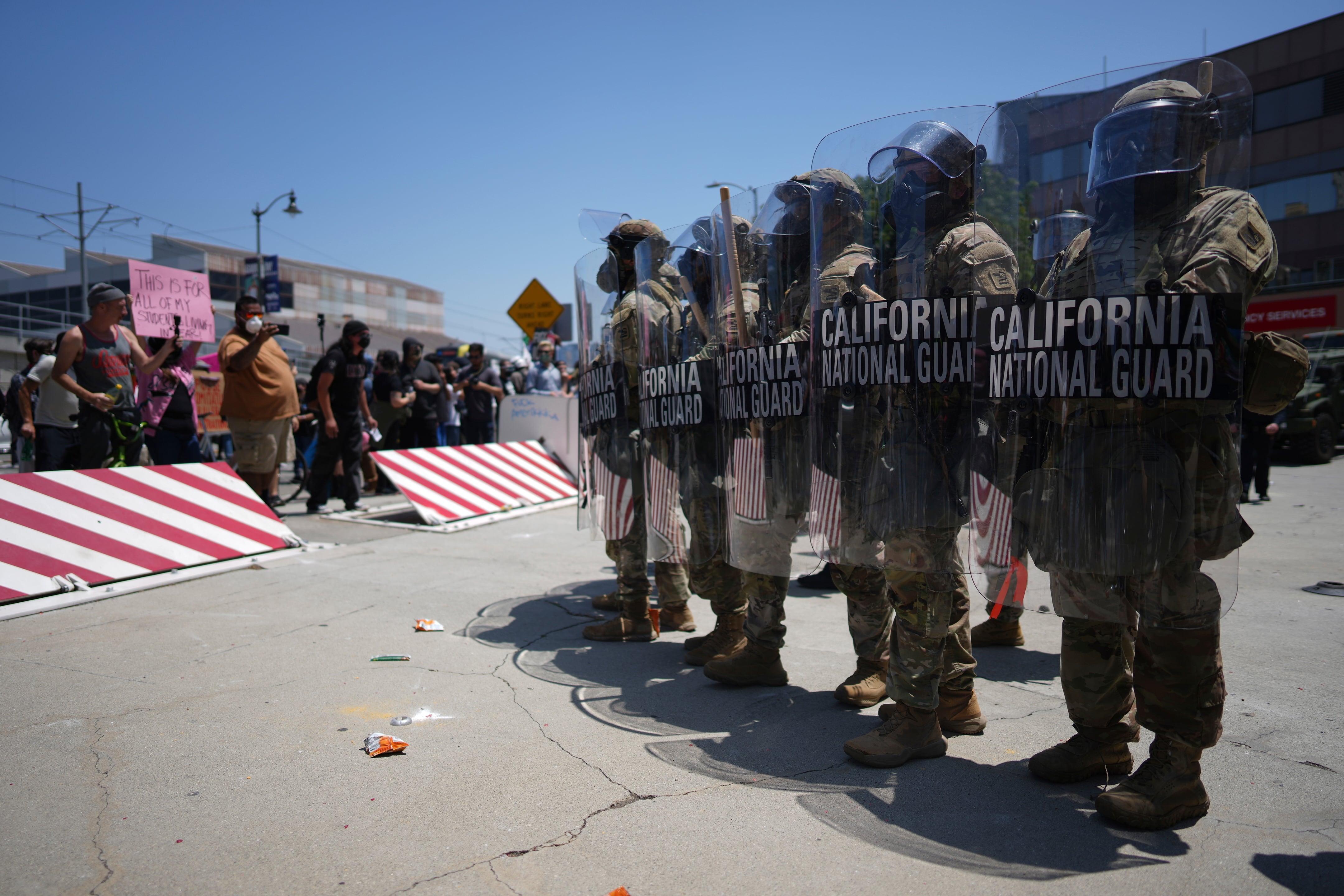The Army recently received its first bundle of “mixed reality” goggles that the branch hopes can redefine individual soldier and squad warfighting.
Those 5,000 goggles are part of a not-yet-released Army fielding plan for the Integrated Visual Augmentation System, which is a combined night vision and thermal device with the ability to feed navigation, position, weapon’s sight views and an array of other data to the user.
Brig. Gen. Christopher Schneider, commander of Program Executive Office-Soldier, told Army Times that the device will help the Army get to the tactical edge of computing and situational awareness at the branch’s lowest echelons.
The $22 billion program has had its delays. And a Defense Department Inspector General audit released in April recommended more soldier input into the device’s development.
Schneider’s predecessor, Maj. Gen. Anthony Potts, told Army Times last year that testing had shown some software reliability problems, image distortion and humidity issues within the device.
Through the end of 2021 and through 2022, PEO-Soldier and other Army entities reworked the device to resolve those problems.
The Army accepted delivery of the ruggedized version of the device in August. The original fielding date had been planned for late 2021. A new fielding date has not yet been announced, as of early October.
IVAS’ foundational technology starts with gaming. The Microsoft HoloLens, an augmented reality goggle, is the basic platform. The company has collaborated with the Army since at least 2018 as it adjusts the technology to military needs, adding new cameras and sensors and integrating the device with existing Army tech.

Pre-existing Army technology includes the Heads-Up Display, or HUD. That’s an effort to get soldiers looking out on the battlefield and not requiring them to look down at a smartphone, tablet or other type of device, a current problem for those using the Nett Warrior and Army Tactical Awareness Kit, or ATAK.
In line with the HUD development is the Family of Weapons Sights-Individual, or FWS-I. That technology started with cabling and has now gone wireless. It allows the user to flip between a goggle view, weapon sight view or a picture-in-picture option to see both while using a rifle or carbine.
It lets soldiers poke a weapon around a corner or over a bunker to see what they are shooting at. It can even let soldiers literally shoot from the hip while seeing their target in their goggle view.
By using those pieces of Army tech combined with a low-light sensor and thermal vision, soldiers can see both at night and through obscurants such as dust, smoke and fog.
Both HUD and FWS-I were developed at the Night Vision Labs at Fort Belvoir, Virginia, also home to PEO-Soldier.
And both technologies are incorporated into the most recently fielded night vision device, the Enhanced Night Vision Device-Binocular.
The ENVG-B has fielded 9,500 systems of its original order for 10,262 systems back in 2019, Maj. Bobby Lee, ENVG-B assistant product manager told Army Times.
While the IVAS has struggled to perform in the night vision category due to a new approach to digital-based night vision versus the legacy analog tech, the goggle has added a host of other options for users that go far beyond night vision.
These options include mission planning and rehearsal. Users can 3D scan an area, mapping the spot to then run simulated drills through. PEO-Soldier demonstrated this to Army Times at Fort Belvoir in 2020.
During field tests in 2019, soldiers at Fort Pickett, Virginia, used micro-drone footage fed to the goggle to conduct reconnaissance on a trench line to defeat an enemy opposition force in the training event.

In January, soldiers with the 1st Armored Brigade Combat Team, 3rd Infantry Division, out of Fort Stewart, Georgia, used the IVAS inside Bradley Fighting Vehicles to see outside the vehicle, using the Bradley’s cameras.
In August, soldiers did a similar experiment with Strykers and were able to perform the same tasks.
Brig. Gen. Larry Burris, the commandant of the Infantry School and director of the Army’s Cross-Functional Team-Soldier Lethality, told Army Times that they had recently experimented with putting wireless routers in helicopters and were able to have soldiers share data with each other, the crew and other aircraft.
Todd South has written about crime, courts, government and the military for multiple publications since 2004 and was named a 2014 Pulitzer finalist for a co-written project on witness intimidation. Todd is a Marine veteran of the Iraq War.










